Hyperbaric Oxygen Therapy (HBOT) is now a widely accepted, FDA approved – and often life saving – modality. There are currently up to 18 conditions covered by insurance and diabetic wound healing is one of the most common.
Diabetic patients are at a greater risk for getting infections and have a more difficult time fighting off infection due to poor circulation, vascular disease (damaged blood vessels) and neuropathy which can affect both peripheral (motor and sensory) and autonomic (internal organ) nerve function. Infection may cause a dramatic rise in blood sugar levels, even for carefully controlled diabetics. This “spike” can be an effective marker for undiagnosed infection.
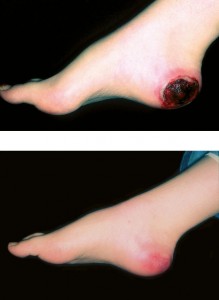
Before and after photos of diabetic foot wound healing from Hyperbaric Oxygen Therapy
Diabetic foot wounds are a major complication of diabetes and the number one reason for hospital admission of the diabetic patient. Untreated or undertreated foot infections can lead to bone infection. When tissue death, gangrene, and bone infection overwhelm a body’s ability to heal, amputation is often seen as the only alternative. The annual health care cost for diabetes in America exceeds $20 billion with more than $1.5 billion of that towards lower extremity amputations as a result of diabetic foot infections. Diabetic patients account for approximately 50% of all lower extremity amputations performed for non-traumatic reasons.[sup]1[/sup]
Dr. Bachir Younes is a board-certified physician specializing in infectious diseases and internal medicine. He is also certified in hyperbaric therapy and wound care and is the Medical Director for Desert Hyperbaric Medicine in Palm Desert.
Even though HBOT has proven to be one of the most effective methods available for healing wounds other therapies cannot, not enough physicians are recommending the therapy according to Dr. Younes. “Unfortunately, I don’t think that HBOT is as recognized as it should be. When patients with diabetic wounds or chronic bone infections have not responded to treatment for over three months, HBOT should be considered.” Many major medical facilities throughout the world have in-house services and medical facilities like Desert Hyperbaric Medicine are becoming more main stream.
How does HBOT aid diabetic wound healing?
Oxygen is an important part of wound healing. During an HBOT treatment, oxygen under pressure is delivered into the chamber increasing the partial pressure within a person’s body as much as 15 times above normal tissue saturation. The elevation in tissue oxygen that occurs in the hyperbaric chamber promotes faster healing.[sup]2[/sup]
Diabetics are prone to vascular disease which damages blood vessels and keeps the blood from delivering much needed nutrients, including oxygen, to the body tissues. “We live at 1 atmospheric pressure and our bodies can take 21% oxygen standardly,” adds Dr. Younes, “With chronic wound care we standardly prescribe 2 hour sessions at atmospheric pressure of 2.2 and 100% oxygen.” This encourages the development of new (bypass) blood vessels aimed at improving circulation.
In addition, if diabetes is poorly controlled, white blood cells and macrophages that normally scavenge infection cannot reach the tissues where needed. Antibiotics are prescribed but are sometimes ineffective. HBOT delivers oxygen into tissues beyond where it can usually be reached by normal circulation. This makes the body more efficient in fighting infection and can even increase the efficiency of some antibiotic drugs.
Dr. Younes indicates that 90-minute sessions, five days a week is commonly prescribed for diabetic wounds as a concentrated healing therapy (sometimes more or less). It is important to note that only certain types of hyperbaric chambers are approved and medically covered for wound healing.
“Hyperbaric Oxygen Therapy is a scientifically proven modality, a relatively safe procedure, and underused. I feel that in the future, we will see more use. HBOT has been used more commonly in large medical centers. It is my hope that we will begin to see more use of this scientifically proven modality here in the desert.”
For more information on HBOT for diabetic wound healing and other conditions, visit www.DesertHyperbaricMedicine.com or call 760.773.3899.
References: 1) “Textbook of Hyperbaric Medicine” K.K. Jain 5th revised and updated edition; 2) “Hyperbaric Oxygen Therapy” Richard A. Neubauer, MD, Morton Walker, DPM





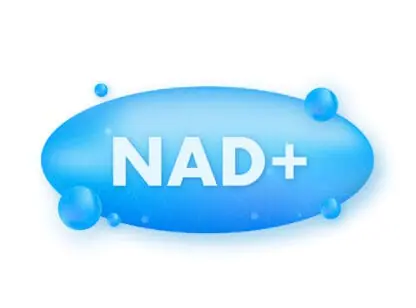


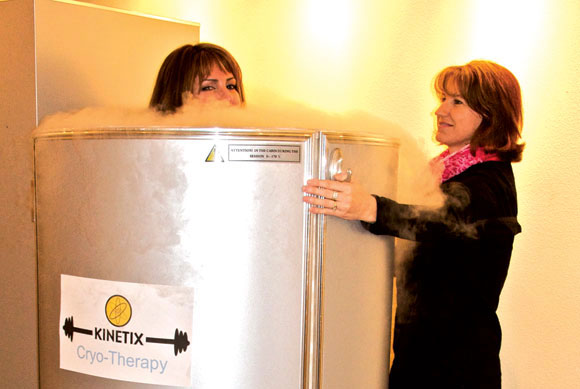

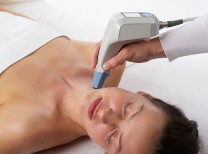
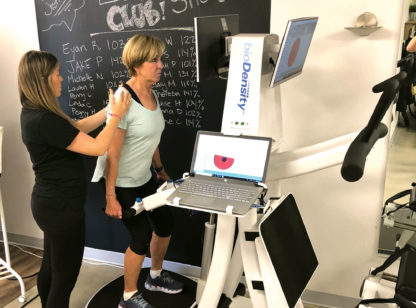



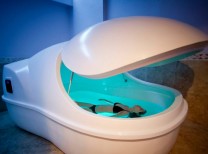
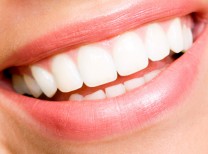

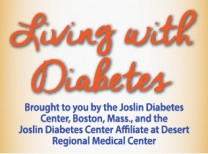


























Comments (0)